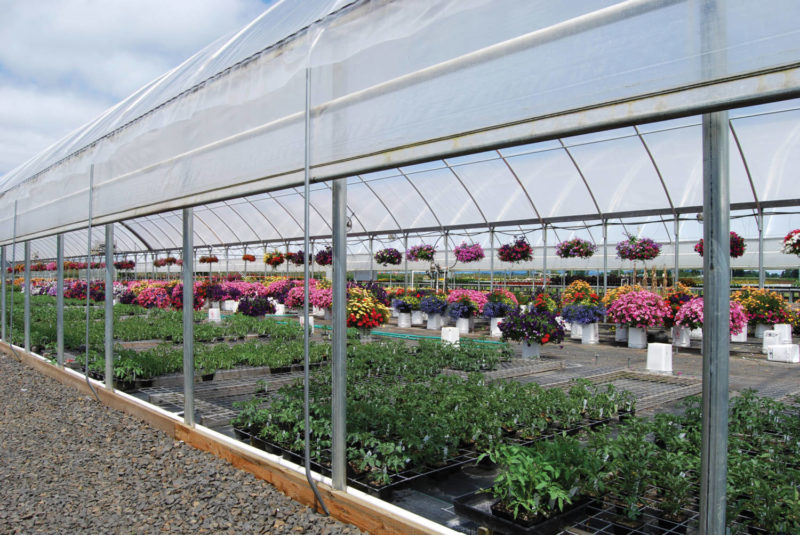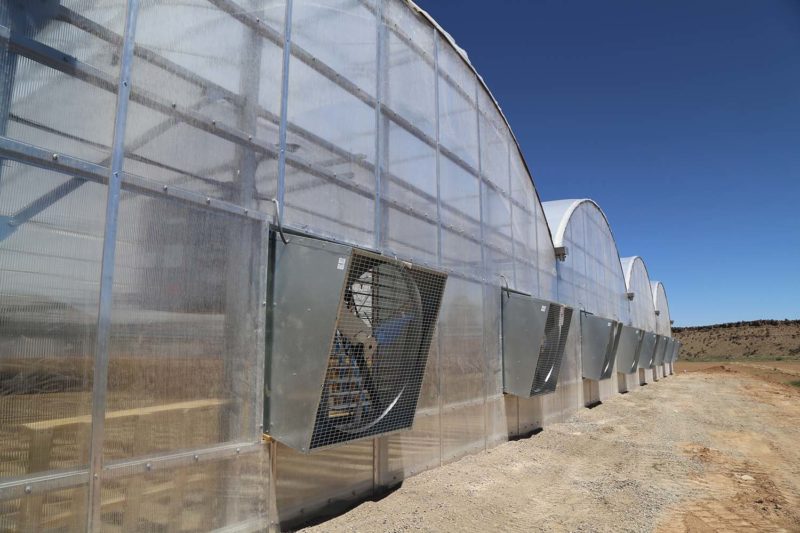
Greenhouse Cladding 101
One of the most important decisions a grower will make is what cladding they should use for their greenhouse. If the wrong cladding is chosen, plants may not get enough light, which will require growers to provide supplemental lighting and raise utility costs. The wrong cladding could also lack durability, making an operation and its crops vulnerable to damage due to severe weather or falling debris. These are issues that can be detrimental to crops and can quickly affect an operation’s profitability, so choosing the right cladding is an important decision that should be carefully considered.
Many factors need to be taken into account to pick your best option. Cost, durability, light transmission and insulation are all key things to think about when choosing a greenhouse cladding. Each of these factors are vital to ensure a grow thrives, and all should be thoroughly considered when picking a cladding.
Of these factors, it is important to remember that insulation is often overlooked, which can be a damaging and costly mistake. Without proper insulation during winter months, heating costs will rise and quickly eat into profits. That is why it is key to look at a cladding’s R-value, a measurement of the thermal resistance, to examine the heat retention and insulation of a cladding to make sure it fits the needs of the grow.
Below we will compare poly film, double poly film, glass and twin wall polycarbonate on the basis of cost, durability, light transmission and insulation to help growers decide which option is best for their greenhouse needs.
POLY FILM
Poly film is the least expensive option, so it is great for growers on a budget. Poly film is offered in a range of thicknesses, so many options are available based on a grower’s needs. Poly film generally has a high tensile strength, meaning it can be pulled tightly and still provide protection from the elements or severe weather.
Due to its translucence, many poly films have a light transmission of 90%, meaning they allow a great amount of natural light in. An increase in the amount of light that reaches crops directly correlates to a higher crop yield, so looking for poly film around the benchmark of 90% light transmission may help to increase the yield of a grow, and in turn, profitability. Many poly films also protect from UV rays, which can adversely affect plant growth, so while letting in natural light, poly film will protect a grow from harmful UV rays and uneven light transmission.

Poly film has an R-value of 0.83. A low R-value means more heat loss and less insulation, so consider the climate a greenhouse is in, what time of year it will be used, and what temperature a grow requires when choosing a cladding.
DOUBLE POLY FILM
Double poly film is a bit more costly than regular poly film, since it consists of two layers rather than a single sheet. Naturally, this option will have added strength because it is double layered. If growers are worried about condensation due to the trapped air, many companies sell anti-condensate film, which will alleviate this concern by controlling drip and condensation within the structure.
The light transmission of many double poly films is close to 90%, so it lets in an abundant amount of softened natural light. The double layered material diffuses direct sunlight, especially when a grower inflates the space between the layers with air. This can be done with a small fan, and the diffusion of the sunlight helps to prevent the burning of plants and shields them from harmful UV rays.
Air is a fantastic insulator, which is why double poly film has a high R-value. This is especially helpful in colder climates or during winter months, when heat loss can be detrimental to crops. The R-value of double poly film can be as high as 1.5, so it provides great insulation for a greenhouse. Compared to single layer poly film with an R-value of 0.83, this is a significant insulation upgrade.
GLASS
Glass is the most expensive greenhouse cladding option and is also fragile. Glass is prone to shattering, breaking, and cracking, which may make it hard to install and maintain. Some growers have even been known to break their glass cladding during the installation process. This may require growers to hire a professional to install their glass cladding, whereas other cladding options, such as twin wall polycarbonate, can be installed easily with minimal labor.
Glass can have up to a 92% light transmission, letting an abundance of natural light into a greenhouse. However, glass offers less light diffusion and UV protection than other options, so it is better suited for plants that thrive in direct sunlight and hotter climates. It is also important to note that glass requires frequent cleaning and is prone to condensation. When water evaporates from the glass cladding, a white residue may remain, which is often calcium deposits. Glass requires more upkeep than other cladding options, as it needs to be consistently cleaned in order to properly maintain it.
The R-value for 3 mm glass is 0.95, which is just slightly higher than poly film. This would make glass cladding better for warmer areas due to its lack of insulation. If someone chooses glass cladding and lives in a colder climate, their heating costs will be considerably raised for their greenhouse during the winter months, and they should budget for an energy-efficient heating system.
TWIN WALL POLYCARBONATE
Many growers think they want glass, but they really need polycarbonate. Twin wall polycarbonate is the second most expensive option but lasts for years, is incredibly durable and more than makes up for the increased cost. It is usually best for commercial and professional uses, but twin wall polycarbonate can be used by anyone, from hobbyist to professional grower. It provides ultimate durability, and is great for harsh climates and inclement weather. What would puncture poly film, for example, will not affect twin wall polycarbonate due to its rigidity. It is impact-resistant and sometimes even referred to as “bomb-proof,” so it will withstand just about anything thrown its way, making it a superior option to glass.
The light transmission of twin wall polycarbonate is 80%. Although this is comparatively low, this material offers enhanced light diffusion and UV protection, ensuring crops will always be protected from UV rays and constantly receive an even, softened natural light.

What twin wall polycarbonate lacks in light transmission, it makes up for in insulation. This material’s R-value is 1.72, which makes twin wall polycarbonate the most insulated cladding option. This material has two layers, so air provides added insulation. But unlike double poly film, twin wall polycarbonate does not require a fan, as the air is already present between the layers of the cladding. This means it is better at retaining heat, which is especially beneficial for growers in colder climates, and it will save growers money on heating their structure during winter months.
Every grower should consider these factors when choosing their greenhouse cladding. It is important for growers to pick the best cladding for their operation by considering their crops’ needs. Think about the climate the greenhouse is in, as well as how durable the cladding needs to be and what is affordable. The correct purchase will ensure that their crops will flourish, so they should always do research and make their decision carefully.


 Video Library
Video Library 




















